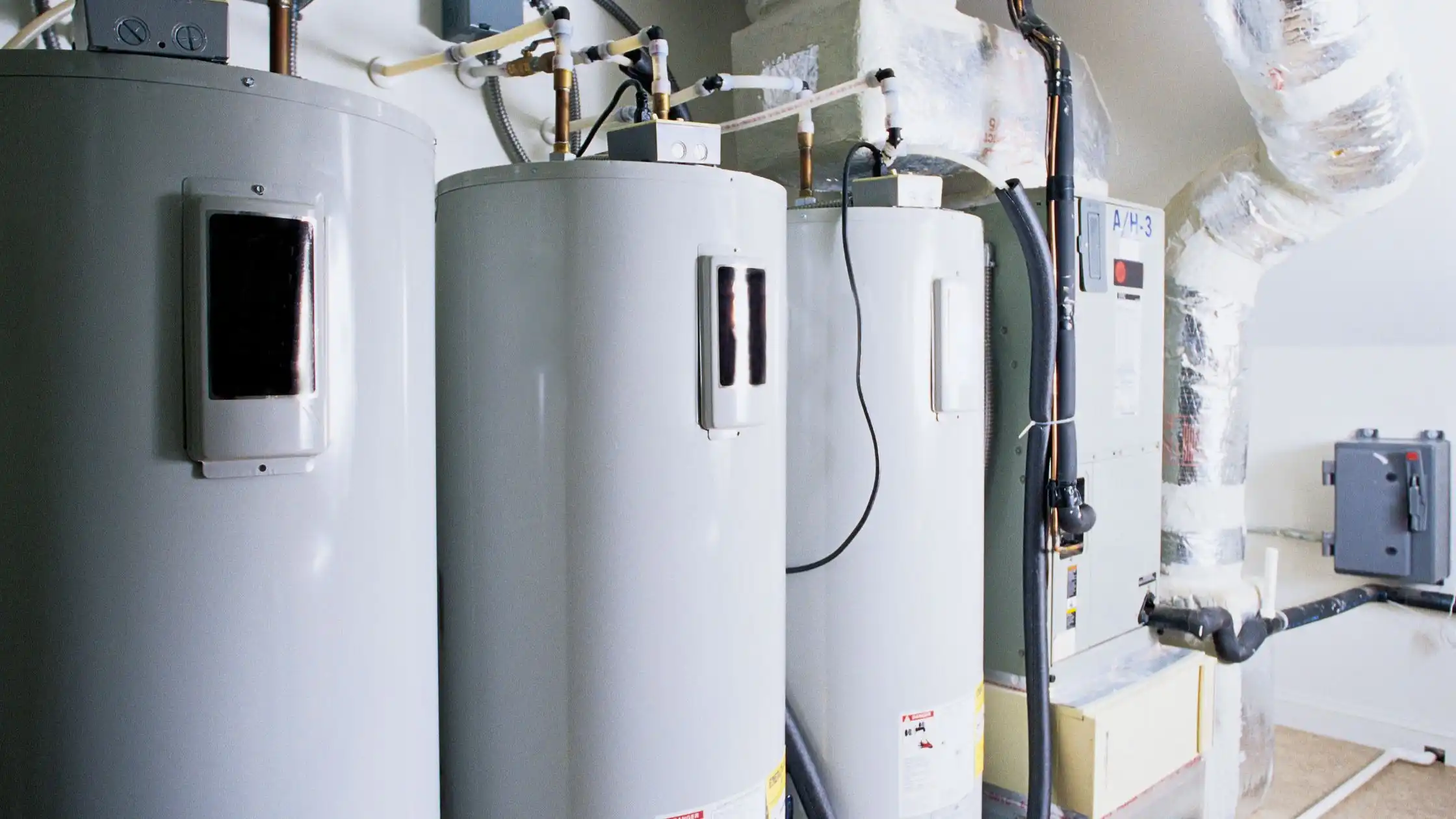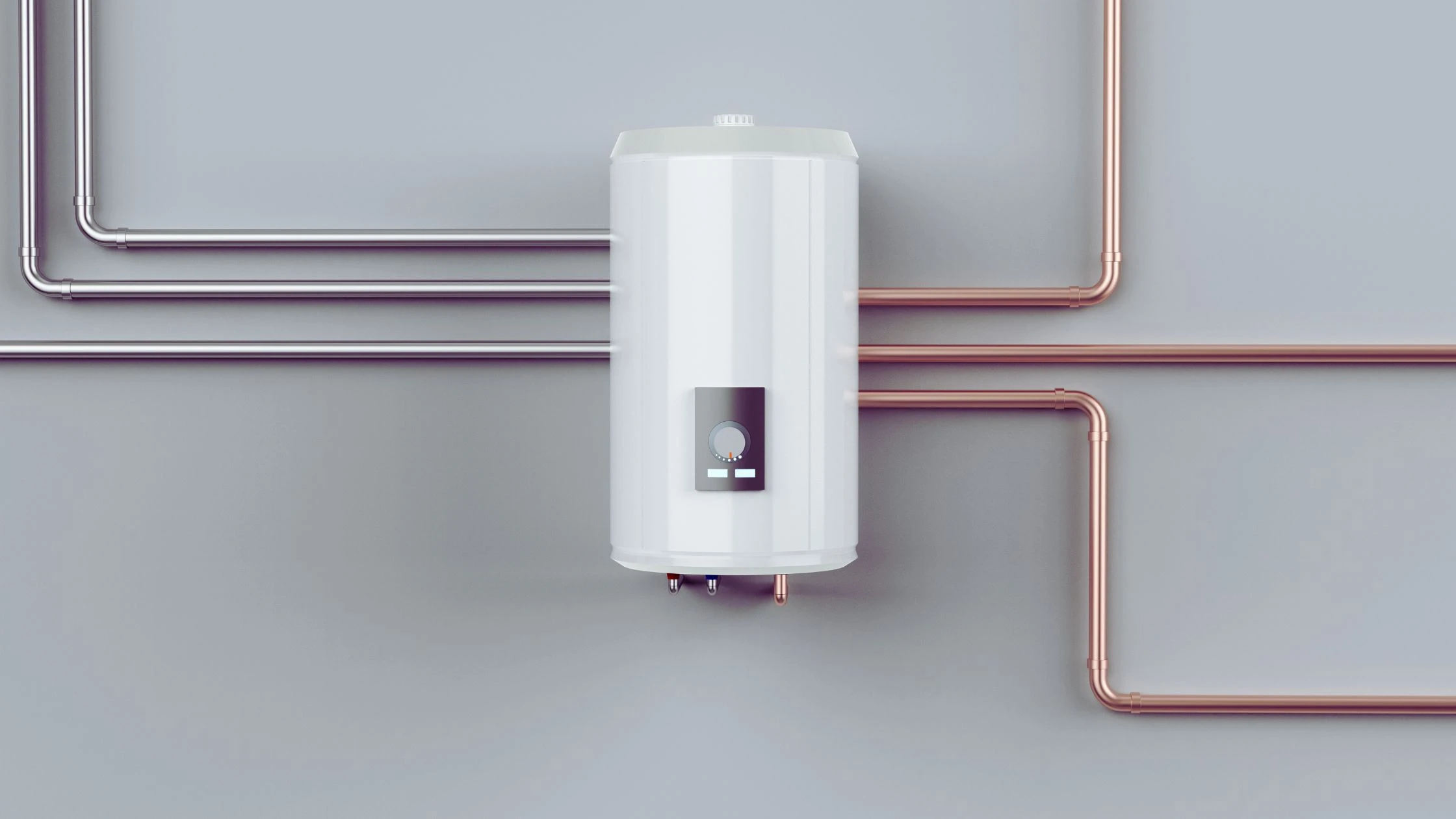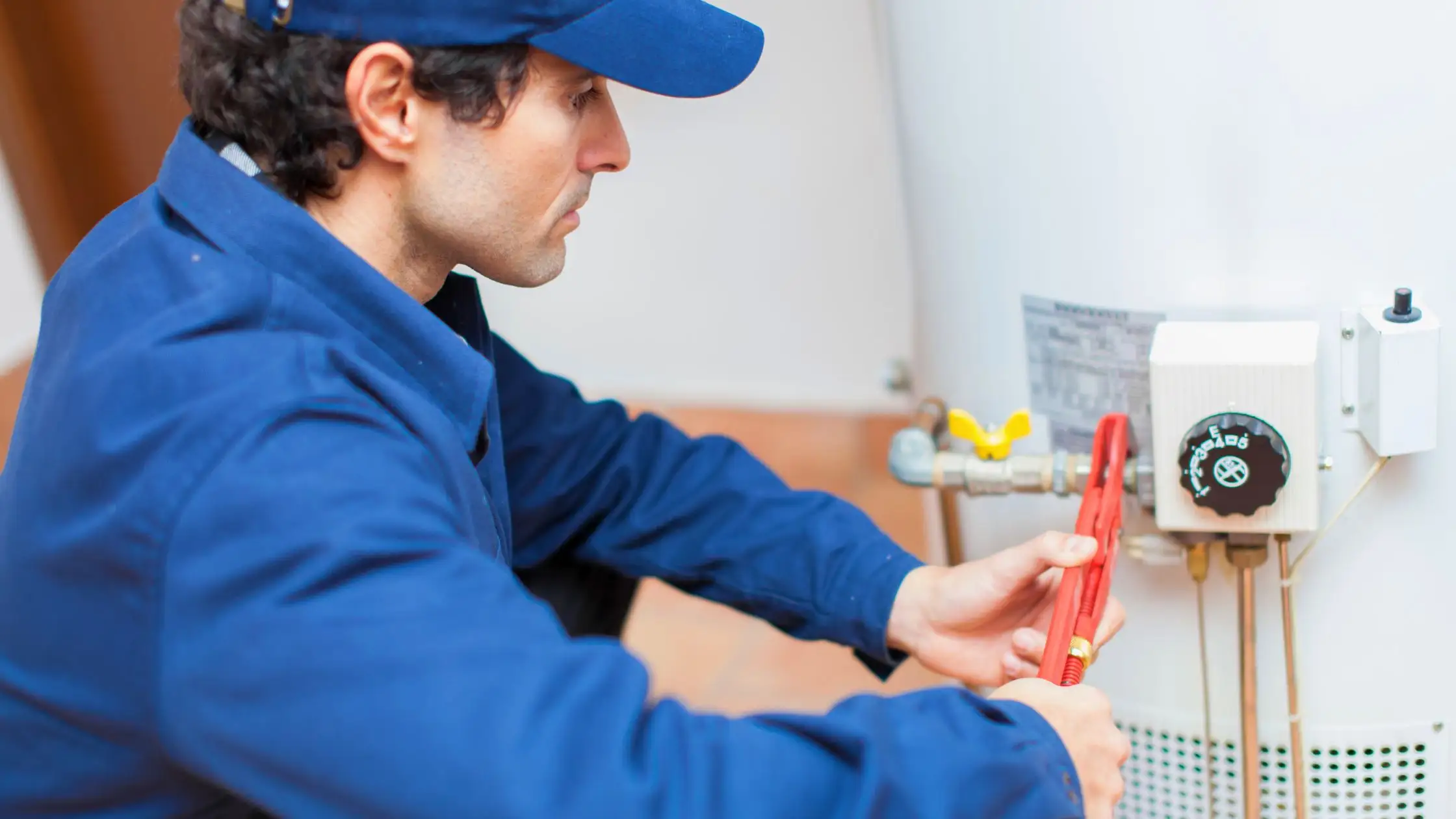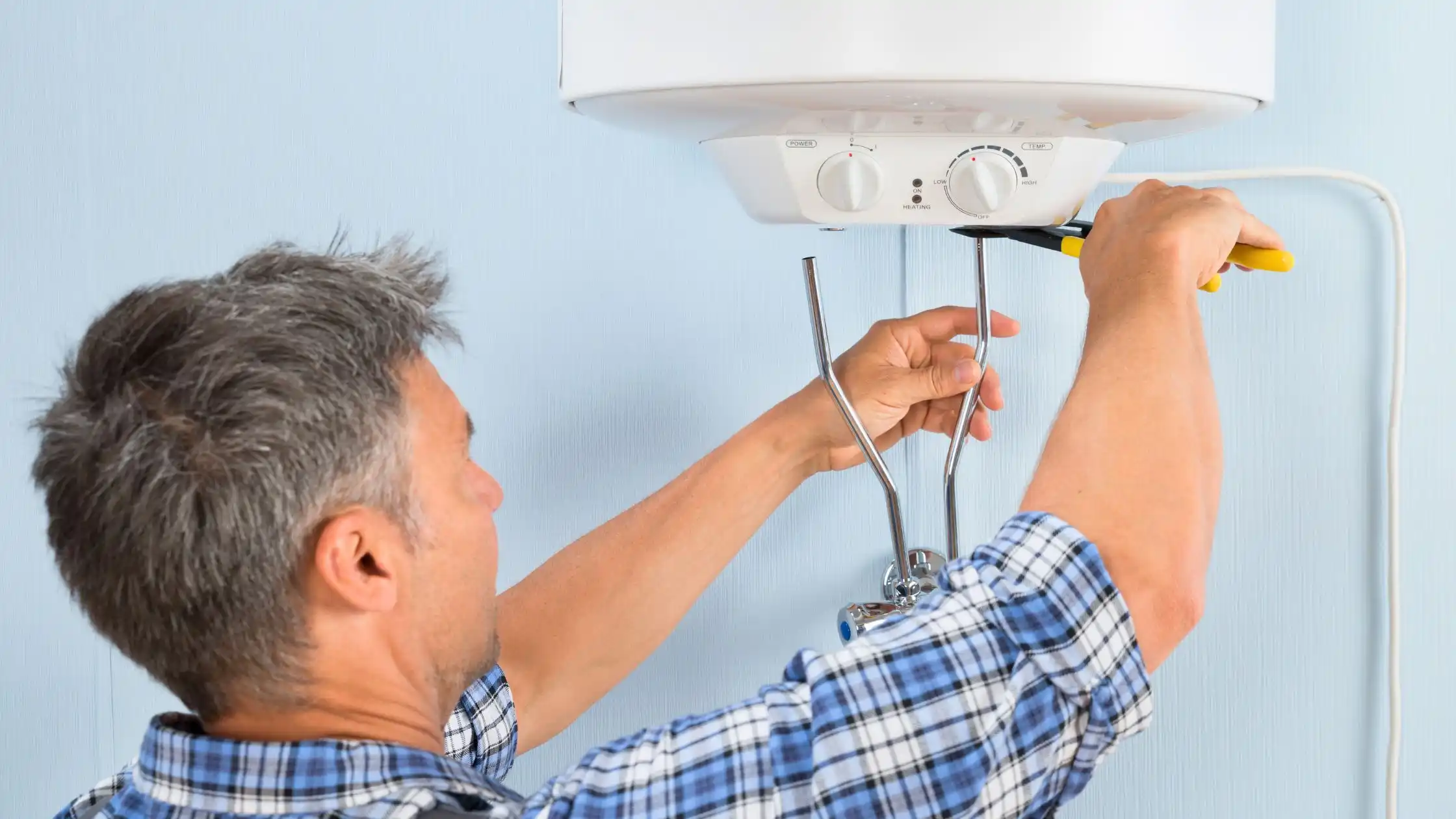Is your water heater leaking from relief valve? This common but concerning issue affects many homeowners and can lead to water damage, inefficient heating, and potentially dangerous pressure buildup if not addressed promptly. This comprehensive guide explains why your water heater’s relief valve might leak, how to diagnose the problem, and the most effective solutions to resolve it safely.
What Is a Pressure Relief Valve?
A pressure relief valve (a temperature and pressure relief valve or T&P valve) is a critical safety component on every water heater. This valve serves as an emergency release mechanism designed to prevent potentially catastrophic pressure buildup within your water heater tank.
The pressure relief valve monitors two crucial factors:
- Temperature – If water becomes dangerously hot (typically above 210°F)
- Pressure – If tank pressure exceeds safe limits (usually 150 psi)
When either condition occurs, the valve automatically opens to release excess pressure or excessively hot water, preventing the tank from rupturing. Without a functioning pressure relief valve, your water heater could become a serious explosion hazard.
Modern pressure relief valves are typically located on the side or top of the water heater tank and include a discharge tube that directs released water safely down toward the floor. This essential safety feature has prevented countless water heater explosions since becoming standard equipment.
Causes of Water Heater Leaking From Relief Valve
When you notice your water heater leaking from the relief valve, several potential causes might be responsible. Understanding these causes can help you determine whether you need a simple adjustment, a replacement part, or professional assistance.
1. Excessive Tank Pressure
One of the most common reasons for a water heater leaking from the relief valve is excessive pressure within the tank. This excessive pressure can develop due to several factors:
- Water supply pressure is too high – If the incoming water pressure to your home exceeds 80 psi, it can create excessive pressure within your water heater tank.
- Thermal expansion – When water heats, it expands. Without proper accommodation for this expansion, pressure builds up.
- Closed water system – Modern plumbing systems often include check valves or pressure-reducing valves that create “closed” systems where expanded water has nowhere to go.
2. Excessive Water Temperature
When your water heater’s thermostat is set too high, it can cause the water to overheat, creating excessive pressure that triggers the relief valve to open. Most water heaters should be set between 120°F and 140°F. Temperatures above this range can not only cause pressure relief valve leakage but also increase energy consumption and create scalding hazards.
3. Faulty Pressure Relief Valve
Sometimes the problem lies with the valve itself. Pressure relief valves can deteriorate over time due to:
- Age-related wear – Most valves should be inspected every 3 years and may need replacement after 5 years
- Mineral buildup – Sediment and mineral deposits from hard water can prevent proper sealing
- Manufacturing defects – Though rare, some valves may have inherent flaws
- Improper installation – A valve that wasn’t installed correctly may leak from the beginning
4. Sediment Buildup in Tank
Over time, minerals and sediment from your water supply settle at the bottom of your water heater tank. This sediment layer can:
- Causes the overheating of water in specific areas of the tank
- Create uneven heating that leads to pressure fluctuations
- Reduce the tank’s capacity, leading to increased pressure
- Interfere with proper thermostat function
5. Expansion Tank Issues
In closed plumbing systems, an expansion tank provides space for expanded water. If this tank is:
- Missing in a closed system
- Incorrectly sized
- Improperly pressurized
- Failed or waterlogged
The excess pressure has nowhere to go except through the relief valve, causing your water heater to leak from the relief valve.
Comparing Water Heater Pressure Relief Valve Problems
| Problem | Symptoms | Typical Causes | Professional Help Needed? |
|---|---|---|---|
| Constant dripping | Small but continuous water release | Excessive pressure, mineral buildup, worn valve | Often |
| Intermittent leaking | Valve leaks only occasionally | Temperature fluctuations, periodic pressure spikes | Sometimes |
| Heavy discharge | A large amount of water was released suddenly | Dangerous pressure buildup, severe overheating | Yes – Immediately |
| Steam discharge | A large amount of water released suddenly | Extreme overheating, thermostat failure | Yes – Emergency |
| Valve won’t stop flowing | Continuous strong flow even after reset | Failed valve, severe system pressure issues | Yes – Urgently |
What to Do If Your Water Pressure Relief Valve Is Leaking
When you discover your water heater leaking from relief valve, follow these steps to address the issue safely and effectively:
Immediate Assessment Steps
- Determine the severity – Is it a slow drip or a heavy flow? Steam presence indicates a potentially dangerous situation requiring immediate attention.
- Check water temperature – If your hot water is excessively hot at fixtures, your thermostat may be set too high or malfunctioning.
- Check the valve itself – Look for corrosion, damage, or obvious defects in the valve assembly.
- Test home water pressure – You can purchase an inexpensive pressure gauge that attaches to an outside spigot to measure your home’s water pressure.
Safe DIY Solutions
For minor leaking issues, some homeowners can safely attempt these solutions:
Testing the Valve
Sometimes, the valve may stick due to mineral buildup or infrequent operation. To test:
- Place a bucket under the discharge pipe
- Lift the test lever briefly and let it snap back
- This may flush out debris and allow the valve to reseat properly
CAUTION: Never test the valve if your water heater is overheating or if you suspect dangerous pressure levels.
Adjusting Water Temperature
If excessive temperature is the issue:
- Locate your water heater’s thermostat
- Turn it down to between 120°F and 130°F
- Wait several hours to see if the leaking stops
Draining and Flushing the Tank
To address sediment buildup:
- Turn off power to the water heater (flip breaker for electric, turn gas valve to “pilot” for gas)
- Turn off the cold water supply
- Connect a garden hose to the drain valve
- Open a hot water faucet somewhere in your house
- Open the drain valve and allow the tank to empty
- Once empty, briefly turn on the cold water supply to flush remaining sediment
- Close the drain valve, remove the hose, refill the tank, and restore power
When to Call a Professional Plumber
While some relief valve issues can be addressed by homeowners, certain situations require professional intervention:
- Steam is present, or water is extremely hot
- The valve continues leaking after DIY attempts to fix it
- Your water pressure exceeds 80 psi throughout your home
- The water heater is more than 10 years old
- You notice corrosion, rust, or damage on the tank or connections
- You hear rumbling, popping, or banging noises from the tank
- You lack experience working with plumbing or water heaters
A licensed plumber has the expertise and tools to:
- Safely replace the pressure relief valve
- Install an expansion tank if needed
- Address whole-house pressure issues
- Evaluate if water heater replacement is necessary
Tips for a Healthy Water Heater
Preventing your water heater leaking from relief valve requires regular maintenance and proper usage. Follow these professional recommendations to extend your water heater’s lifespan and minimize relief valve problems:
Regular Maintenance Practices
- Annual flushing – Drain and flush your water heater yearly to remove sediment buildup, particularly important in areas with hard water.
- Inspect the anode rod – This sacrificial component prevents tank corrosion. Check it every 2-3 years and replace when significantly deteriorated.
- Test the pressure relief valve – Once or twice yearly, briefly lift the test lever to ensure proper operation.
- Check for leaks – Regularly inspect connections, valves, and the tank base for moisture or corrosion.
- Monitor water pressure – Consider installing a pressure gauge on your main supply line for ongoing monitoring.
Optimal Settings and Configurations
- Temperature setting – Maintain water temperature between 120°F and 130°F for efficiency and safety.
- Expansion tank – If your home has a closed plumbing system, ensure a properly sized expansion tank is installed and pressurised correctly.
- Pressure-reducing valve – If your home’s water pressure exceeds 80 psi, install a pressure-reducing valve at the main supply.
- Water softener consideration – In hard water areas, a water softener can reduce mineral buildup throughout your plumbing system, including your water heater.
- Insulation – Insulating hot water pipes and the tank (for older models) improves efficiency and reduces temperature fluctuations.
Signs of Impending Issues
Be vigilant for these early warning signs that could prevent a serious water heater failure:
- Rusty water – Indicates potential tank corrosion
- Metallic taste or smell – May signal deteriorating tank interior
- Reduced hot water capacity – Often caused by sediment accumulation
- Strange noises – Popping or rumbling suggests sediment interaction with heating elements
- Age over 10 years – The typical lifespan of a conventional water heater
When to Replace Your Water Heater
Sometimes, recurring issues with your water heater leaking from relief valve indicate that replacement might be more cost-effective than continued repairs. Consider these factors when deciding whether to repair or replace:
Age Considerations
Water heaters have typical lifespans:
- Conventional tank models: 8-12 years
- Tankless systems: 15-20 years
- Heat pump water heaters: 12-15 years
If your unit is approaching these age ranges, replacement often makes more financial sense than major repairs.
Performance Evaluation
Signs that replacement may be warranted include:
- Frequent repairs within a short timeframe
- Declining efficiency despite maintenance
- Inability to meet household hot water demands
- Visible rust or corrosion on the tank exterior
- Evidence of water leakage from the tank itself (not just connections)
Cost-Benefit Analysis
When deciding whether to replace your water heater, consider:
- Repair costs vs. replacement – If a repair will cost more than 50% of a new unit, replacement is typically more economical.
- Energy efficiency improvements – Newer models are significantly more efficient, potentially saving 10-50% on water heating costs.
- Technology advances – Modern options like tankless, hybrid, and smart water heaters offer improved performance and convenience.
- Environmental impact – Newer units typically have better efficiency and lower emissions.
- Future needs – Consider changes in household size or usage patterns when selecting a replacement.
Expert Insights on Pressure Relief Valve Safety
Professional plumbers emphasise that while a water heater leaking from relief valve is inconvenient, tampering with this critical safety component can be dangerous. Master plumber James Holloway explains: “The pressure relief valve is essentially the last line of defence against a catastrophic water heater failure. Never cap, plug, or disable this valve, even if it’s leaking. Instead, address the underlying cause.”
Recent research from the Water Heater Safety Council indicates that improper pressure relief valve maintenance contributes to approximately 40% of preventable water heater failures. Their 2023 study found that regular testing of relief valves could prevent thousands of water damage incidents annually.
Industry experts recommend having your water heater professionally inspected every two years, with particular attention to the pressure relief valve, thermostat accuracy, and overall tank condition. This preventative maintenance approach costs significantly less than emergency repairs or water damage restoration.
Conclusion
A water heater leaking from relief valve shouldn’t be ignored, as it indicates underlying issues that could potentially become dangerous. Whether caused by excessive pressure, high temperatures, sediment buildup, or valve failure, this common problem requires attention to ensure your water heater operates safely and efficiently.
Regular maintenance, proper installation of expansion tanks in closed systems, and monitoring water pressure can prevent many relief valve issues. When leaks do occur, proper diagnosis and timely intervention—either through DIY methods or professional service—can resolve the problem before it leads to water damage or more serious consequences.
Remember that while a leaking relief valve is inconvenient, this component is designed to protect your home from potentially catastrophic water heater failures. By understanding the causes and solutions for relief valve leaks, you can maintain your water heater’s longevity while ensuring the safety of your home and family.
FAQs on Water Heater Leaking from Relief Valve
Is a leaking pressure relief valve dangerous?
A minor leak itself isn’t typically dangerous, but it indicates a potential problem that could become serious if ignored. The underlying cause—excessive pressure or temperature—could lead to dangerous situations if not addressed. Never disable or cap a leaking relief valve, as this removes a critical safety feature.
How much does it cost to replace a water heater pressure relief valve?
The typical cost ranges from $20-$40 for the valve itself, while professional installation typically adds $100-$200 in labour costs. Total replacement costs usually range from $120-$250, depending on your location and accessibility of the valve.
Can I replace a pressure relief valve myself?
While physically possible for experienced DIYers, replacing a pressure relief valve involves working with a critical safety component. Improper installation can create dangerous conditions. Most manufacturers and plumbing codes recommend professional installation to ensure proper function and compliance with local building codes.
How often should I test my water heater’s pressure relief valve?
Manufacturers generally recommend testing the valve once or twice per year by briefly lifting the test lever and allowing a small amount of water to discharge. However, be aware that on older water heaters, testing may lead to leaks if the valve doesn’t reseat properly.
Why does my pressure relief valve leak only at night?
Nighttime leaking often occurs because municipal water pressure typically increases during low-demand periods. Without a pressure regulator or expansion tank, this increased pressure may trigger your relief valve to open. Installing a pressure-reducing valve and expansion tank can resolve this common issue.
Can hard water cause relief valve problems?
Yes, mineral deposits from hard water can accumulate on valve components, preventing proper seating and causing leaks. Hard water also accelerates sediment buildup in the tank, which can lead to overheating and pressure issues that trigger relief valve discharge.









